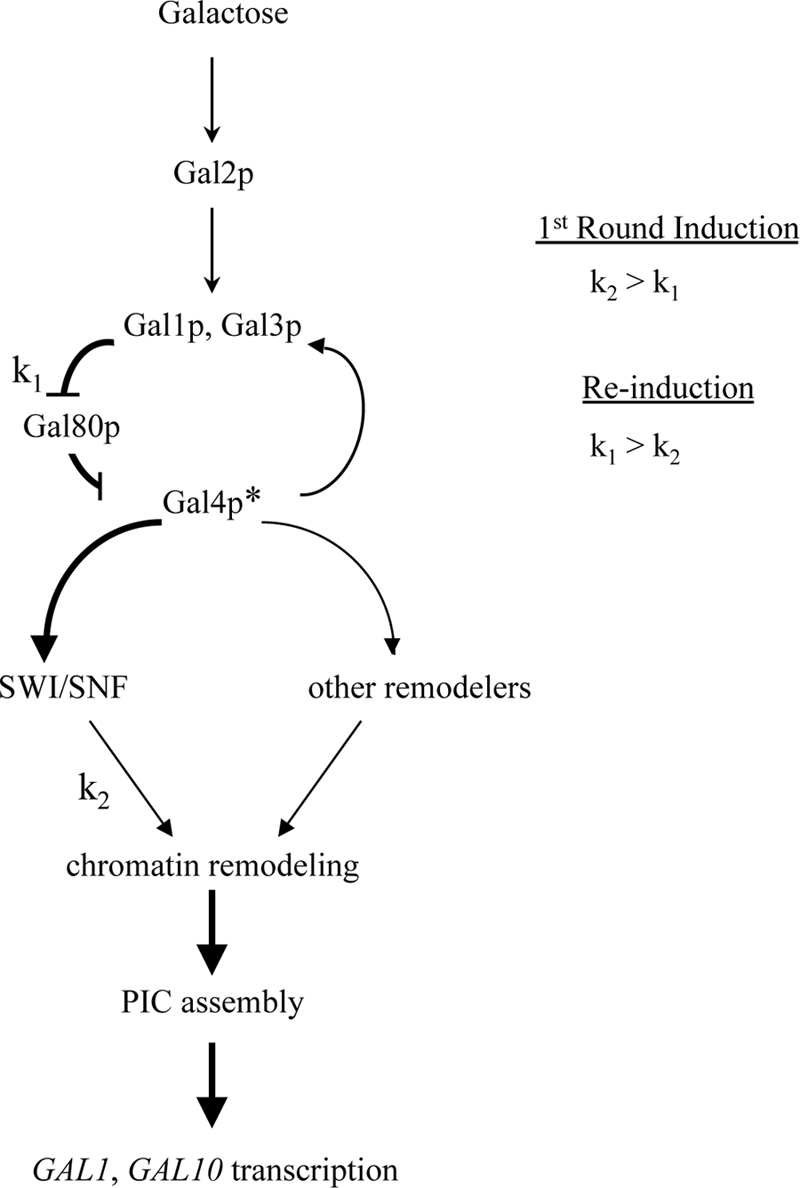FIG. 7.

Two-step model for optimum induction kinetics of GAL1 transcription. Extracellular galactose is transported into the cytoplasm by Gal2p, and galactose-bound Gal3p or Gal1p antagonizes the Gal80 repressor, leading to the activation of the Gal4p activator and allowing it to recruit SWI/SNF. Chromatin remodeling by SWI/SNF leads to the rapid loss of promoter nucleosomes and PIC assembly, resulting in GAL1 induction. Gal4p activation (shown as Gal4p*) leads to an increased production of Gal1p and Gal3p, thereby amplifying the signal. k1 and k2 represent the rate-determining steps of this pathway, where k1 reflects the action of Gal1p and Gal3p and k2 reflects chromatin remodeling by SWI/SNF. In the absence of SWI/SNF, other nonspecific chromatin remodelers may cause promoter nucleosome loss. In the initial round of induction, Gal1p and Gal3p levels are low, making k1 the rate-determining step. After the initial round of expression and a brief period of glucose repression, Gal3p and Gal1p levels are much higher than those in the initial state. Hence, k1 is fast during GAL reinduction, making k2 the slowest and rate-determining step.
